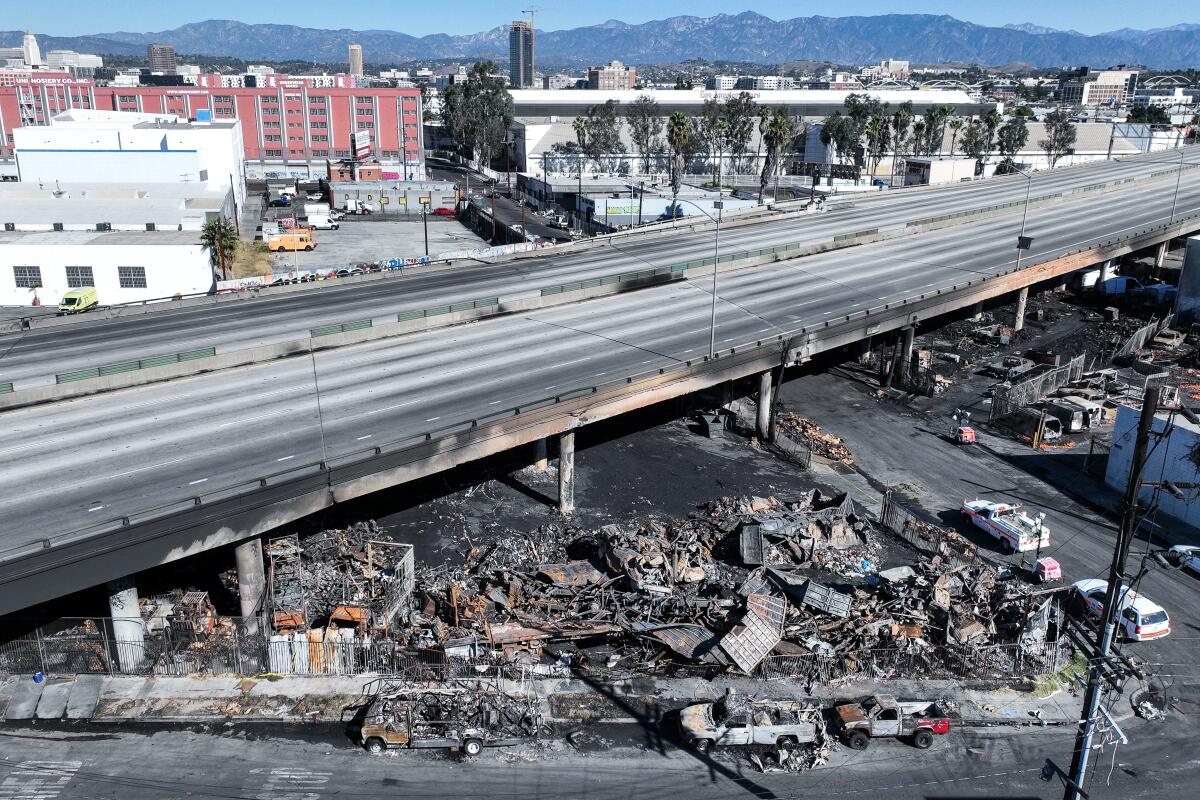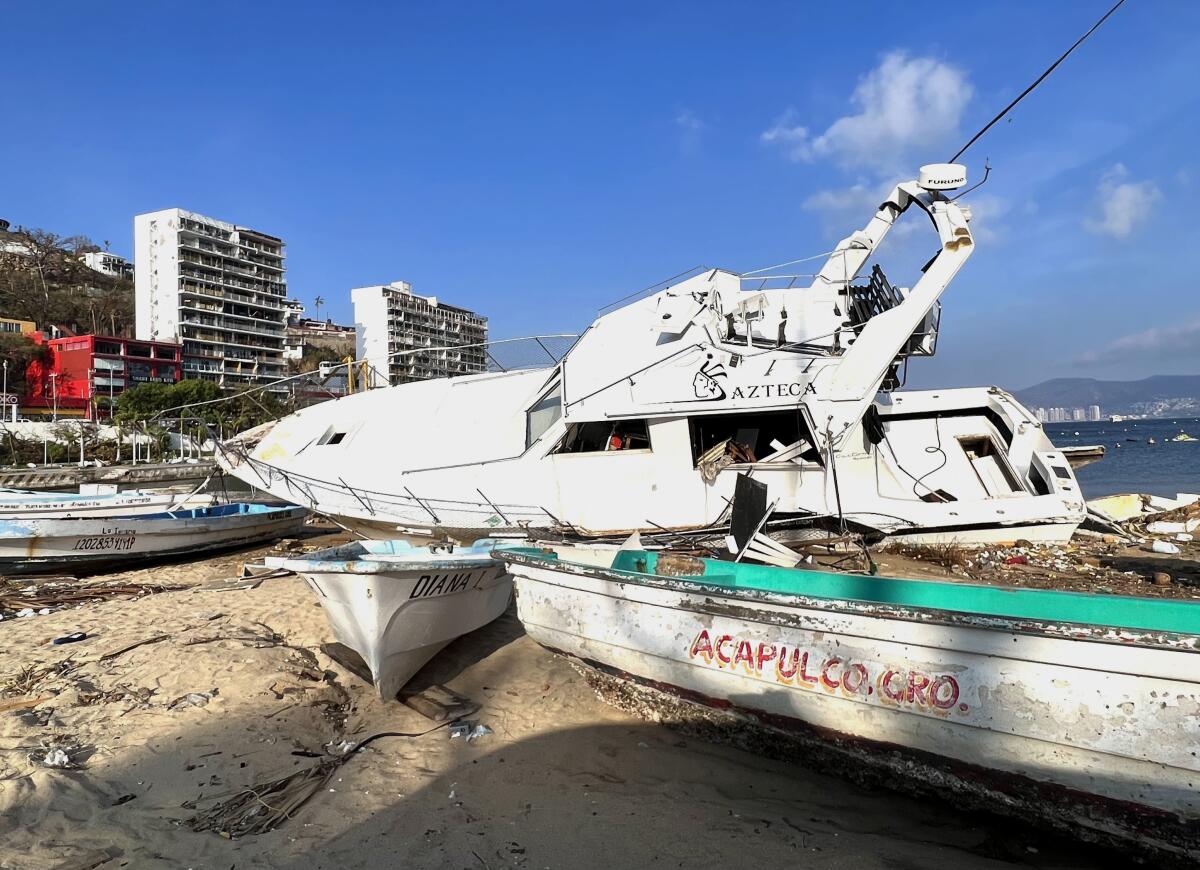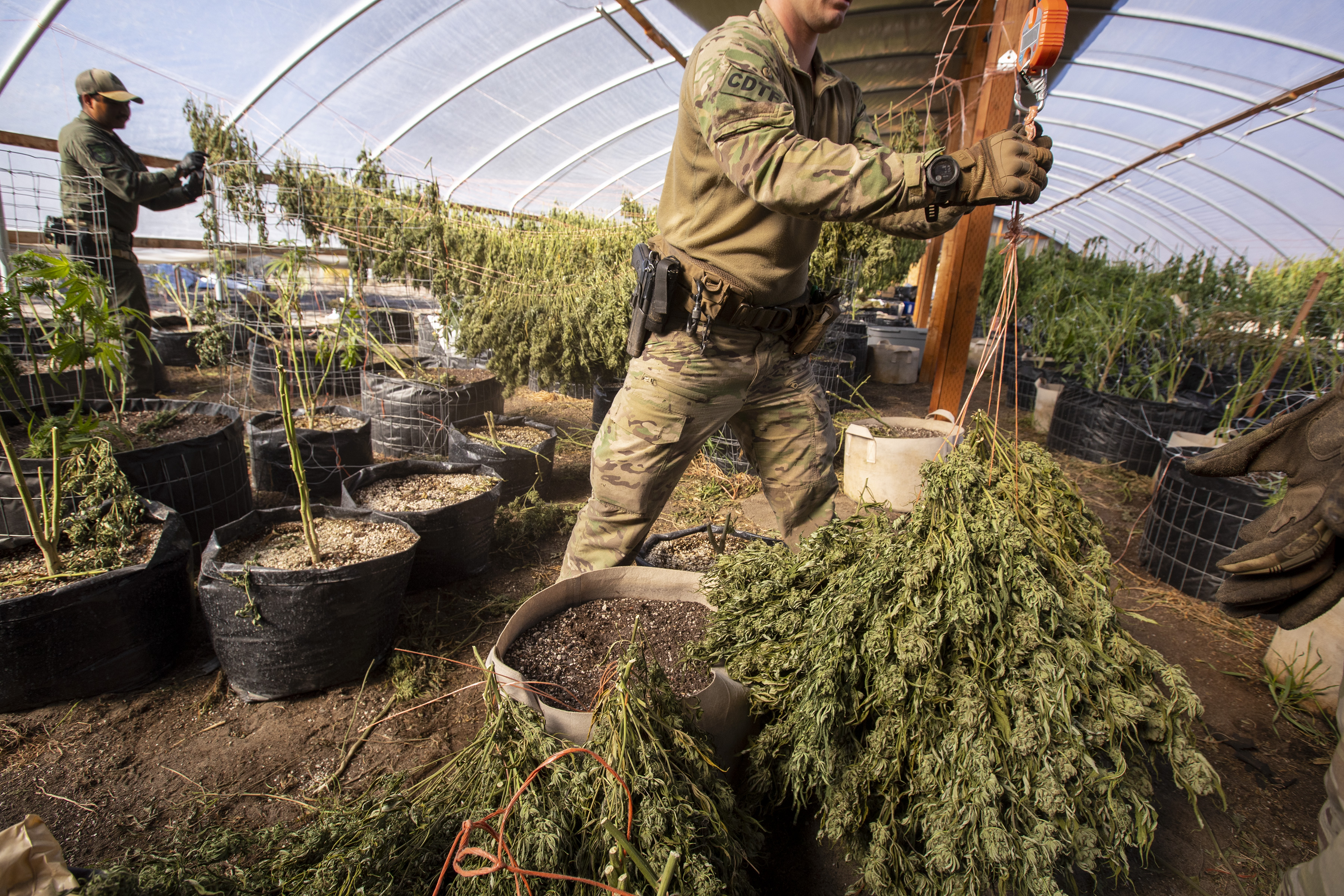Good morning. It's Monday, Nov. 13. Here's what you need to know to start your day.
When cartel doesn't mean cartel
I'm Paige St. John, joining in from the investigative desk at The Times.
I've reported on the darker side of California cannabis since the state legalized recreational weed in 2016, and unleashed a boom in outlaw cannabis. We published our first investigation in 2017, examining what seemed an unsustainable explosion of illegal small farms run by Hmong growers in the high desert of Siskiyou County.
Cannabis experts said this community would wither, unable to compete with the newly legal market. They were wrong. Satellite imagery shows Siskiyou County now boasts the state's greatest concentration of cannabis, all of it illegal.
From the start, rhetoric diverted frank discussion about the rapidly expanding billion-dollar criminal industry. Law enforcement, lacking resources to identify the leaders of these multi-state operations, reached for a familiar label: "cartel." So, too, did frightened rural residents who found themselves surrounded by illegal greenhouses patrolled by men with guns. Such semantics denigrate the most vulnerable players in this California business, relegating them to the shadows, including a father and son who hoped to send money home and instead lost their lives.
In the criminal world, "cartel" is normally shorthand for Mexican drug syndicates, notoriously violent organizations that put dismembered bodies on public display, and terrify and torment entire towns.
But in Siskiyou County, the cartel was Hmong refugees arriving from Milwaukee. When Chinese growers from Sacramento moved into the valley, they, too, were "cartel."
When reporting took me to the north coast, I encountered Bulgarian growers. They also were "cartel." And throughout California, outlaw cannabis operations that used Mexican laborers were labeled "cartel," even where landowners were white and the grow bosses unknown.
The sheriff of Tulare County in January instantly blamed the massacre of six people (including an infant in arms) on "the cartel," due to the violence, then incrementally dialed back his language as it became known the Goshen massacre was a turf war between Central Valley gangs.
What I did not find were criminal cases that link California cannabis to the violent narco-trafficking cartels of Sinaloa or Michoacan. Rural police lack the ability to even investigate. Siskiyou County's two-man narcotics squad spends a good deal of time bulldozing plants beside the two-man squad in Mendocino County. And in Trinity County. And in Humboldt County.
Yet "cartel cannabis" has become a trigger phrase to decry U.S. immigration policy.
Such language distorts a lot about California's outlaw cannabis industry. For one, it obfuscates the homegrown nature of the state's weed trade, shifting blame for its violence and pervasiveness to an evil external force.
And second, it discounts a very large victim class, its workers.
Cannabis is among the nation's most labor-intensive crops, on par with strawberries. Laborers are low wage and transitory, moving from farm to farm, sleeping next to or sometimes in the greenhouses they tend. They are predominantly minority, drawn from immigrant communities and migrant labor pools. Wage theft is common. And their deaths are untracked.
I analyzed coroner records from the 10 counties willing to provide them, and found 44 cannabis farm deaths over a five-year period. Often, county officials removed identifying information needed to track down next of kin who could describe the lives and goals of these lost workers.
A rare exception was the family of Ulises Ayala, a Mexican shoe salesman who with his teenage son came north in search of work. The father and son wound up on a cannabis farm in Mendocino County, where they were shot, beheaded, and then incinerated on a pile of burning tires, with live chickens thrown into the pyre.
Their killer, a California weed farmer, said his victims were "cartel." And he was certain no one would report their deaths.
ADVERTISEMENT BY Upway
 Upway sells e-Bikes from top brands, all priced up to 60% off retail. Their master mechanics rigorously inspect, tune up, and certify every Upway e-Bike, backed by a 1-year warranty and 14-day returns. Your Upway e-Bike arrives 99% assembled at your doorstep within a week. Choose from a broad selection of e-Bikes, including brands like Specialized, Giant, and Aventon. Upway's mission is to make electric mobility accessible to everyone.
Pedal your way to incredible savings this Bike Friday! Enjoy up to an extra $1,200 off on a broad selection of e-Bikes among the best brands.
End of advertisement
|
|
Today's top stories

Aerial views of the 10 Freeway on Sunday after a large pallet fire burned below, shutting the freeway to traffic. (Robert Gauthier / Los Angeles Times)
Transportation
Hollywood
- Hollywood political donations, sharply stymied by this year's strikes, are expected to spike now that the Screen Actors Guild has reached a tentative deal with the studios.
- SAG-AFTRA's national board of directors on Friday cleared the way for members to vote on the tentative contract.
War in the Middle East
Education
Climate and Environment
More big stories
Get unlimited access to the Los Angeles Times. Subscribe here.
Today's great reads

(Patrick McDonnell/Los Angeles Times)
No fun in Acapulco: Smashed buildings, overturned boats and broken lives in wake of Hurricane Otis. Otis is the strongest storm on record to have ever battered Mexico's Pacific Coast, scientists say. And it hit Acapulco head-on with sudden fury that left authorities, residents and tourists with little time to prepare as Otis plowed a broad swath of destruction.
How can we make this newsletter more useful? Send comments to essentialcalifornia@latimes.com.
For your downtime

House-made pastries, with the tonka bean brioche in the center, at Maison Matho in Los Angeles. (Shelby Moore / For The Times)
Going out
Staying in
And finally ... a great photo
Show us your favorite place in California! Send us photos you have taken of spots in California that are special — natural or human-made — and tell us why they're important to you.

For an Image story about manufactured happiness. (Paul Yem / For The Times)
Today's great photo is from Paul Yem for The Times' Image Magazine. Yem is interested in the idea of "manufactured happiness" and sees it in the homes of suburban Los Angeles, which he describes as "candy-coated anti-depressants." Read more about his perspective in this interview.
Have a great day, from the Essential California team
Paige St. John, reporter
Laura Blasey, assistant editor
Check our top stories, topics and the latest articles on latimes.com.








Comments
Post a Comment